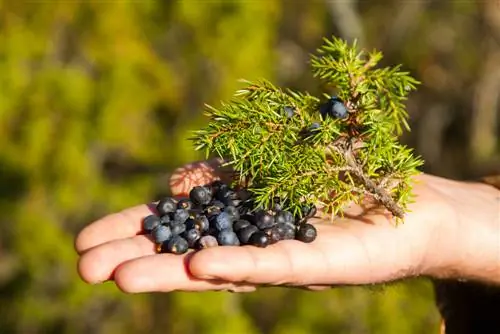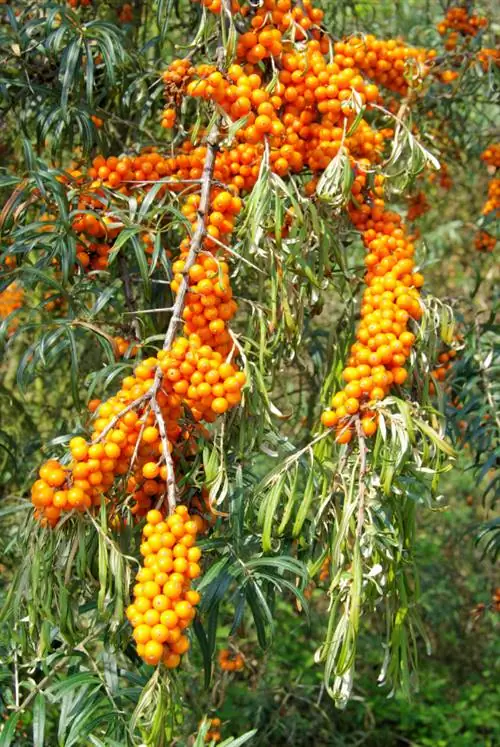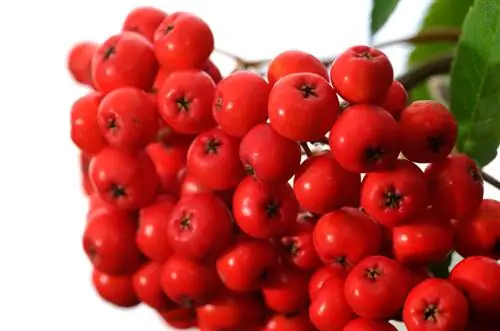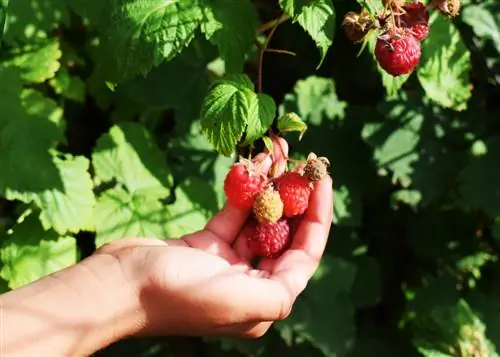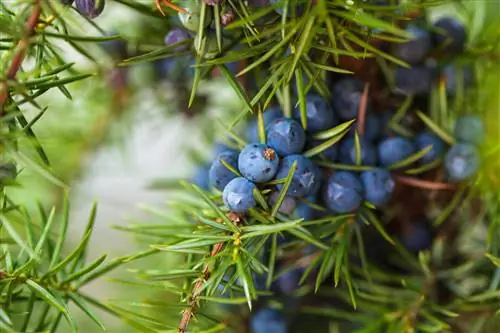- Author admin [email protected].
- Public 2023-12-16 16:46.
- Last modified 2025-01-23 11:21.
Juniper berries have been considered a valuable addition to the kitchen in the past. The cone fruits are used as a spice and have benefits in natural medicine. But the harvest is not that easy.

When and how should you harvest juniper?
To harvest juniper berries, choose ripe, blue-black fruits of the common juniper (Juniperus communis) in the fall. Place a cloth under the plant, shake or tap the trunk and collect the fallen fruit. Dry them in an airy, shady place for up to three weeks.
Caution: risk of toxic confusion
If you want to harvest juniper berries, you should only collect the fruits of the common juniper (Juniperus communis). The tree can easily be confused with the related Sade tree (Juniperus sabina), whose black-blue fruits are poisonous. To tell the species apart, you should look at the shoots and leaves. In the shrub-like Sade tree they are scale-shaped, while the taller growing juniper develops pointed needle leaves.
Harvest time
It can take up to three years for Juniperus communis to bear ripe fruit. When the fruit is ripe, the cones are blue-black in color and have a bluish frost. Unripe fruits are green in color and are difficult to pick. The ideal time for harvesting is in autumn. Check the bushes from the end of August. You can pick fruit until September.
Picking fruits
The common juniper is covered in sharp needle leaves that quickly bore into the skin. To avoid injury, you should wear gloves (€9.00 on Amazon).
Harvesting Instructions:
- place a large cloth under the plant
- shake the trunk with your hand
- alternatively, gently tap the trunk with a long stick
- pick up fallen fruit
Drying the crop
Place the juniper berries on a cloth in an airy and shady place. A dark, warm room that is regularly ventilated is ideal. The drying process can take up to three weeks depending on the climate. If fruits turn brown or holes are visible, you should discard them. They may be infested with pests or diseases and are inedible. Check the drying progress daily. Dried fruits have a shelf life of several years.
Store correctly
Pour the dried berries into a jar with a screw cap and place it in a cool, dry place. It is important that the fruits do not contain any moisture. Even small amounts of water can cause mold to form. If you spread your harvest across several containers, the risk of all the fruit becoming moldy is reduced.

